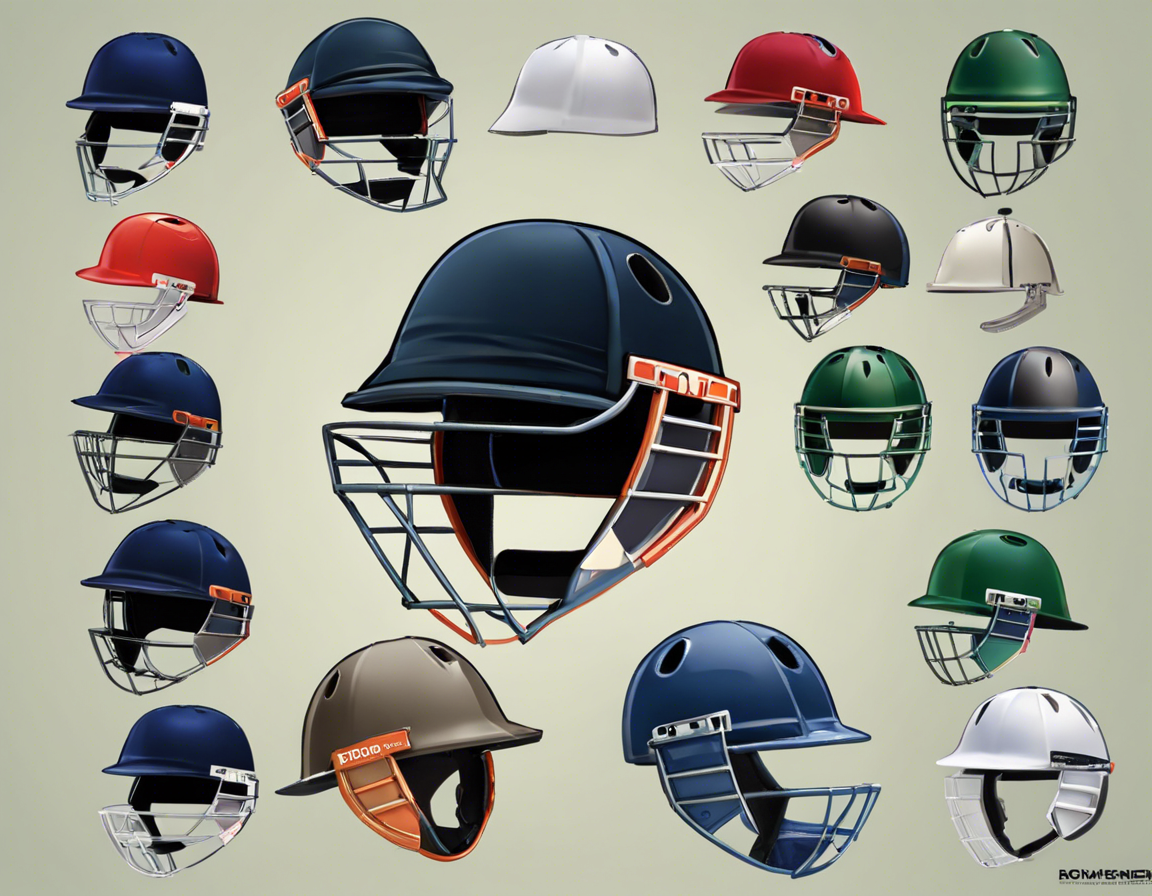Cricket, a sport beloved by millions worldwide, is a game of skill, strategy, and passion. One of the most important elements of the game is safety, particularly when it comes to protecting yourself while playing. A cricket helmet is an essential piece of protective gear that every cricketer should wear when playing the game. In this article, we will discuss the importance of a cricket helmet, its components, how to choose the right one, and some frequently asked questions related to cricket helmets.
Why Wear a Cricket Helmet?
Protection from Head Injuries
The most crucial reason to wear a cricket helmet is protection from head injuries. Cricket involves bowlers delivering balls at high speeds, and batsmen facing those deliveries. A mistimed shot or a quick bouncer can result in the ball hitting the batsman’s head, which can have severe consequences without a helmet.
Safeguarding Against Facial Injuries
Apart from head injuries, a cricket helmet also provides protection against facial injuries. A well-fitted helmet with a sturdy grille can prevent facial fractures, broken teeth, and other injuries that may occur due to a fast delivery hitting the face.
Confidence and Focus
Wearing a helmet can give a batsman confidence and focus while facing fast bowlers. Knowing that you are protected can help you concentrate on your game without worrying about getting hit.
Setting a Good Example
For young and aspiring cricketers, wearing a helmet sets a good example of safety. It instills in them the importance of protecting themselves while playing the sport, promoting a culture of safety and responsibility on the cricket field.
Components of a Cricket Helmet
A standard cricket helmet comprises the following components:
Shell
The outer protective shell of the helmet is usually made of high-density foam or fiberglass. It is designed to absorb and distribute the impact of a ball hitting the helmet, reducing the force transmitted to the wearer’s head.
Grille
The helmet grille, typically made of steel or titanium, covers the face and protects it from direct impact. Modern helmets may have advanced grille designs to enhance visibility and airflow while maintaining optimal protection.
Inner Padding
Soft inner padding materials like foam or gel are used inside the helmet for cushioning and comfort. They also help in providing a snug fit for the wearer.
Chin Strap
The chin strap secures the helmet in place during intense movements on the field. It is essential for ensuring that the helmet stays firmly on the player’s head and does not come off upon impact.
Choosing the Right Cricket Helmet
When selecting a cricket helmet, consider the following factors:
Fit
A properly fitting helmet is crucial for effective protection. Ensure that the helmet sits snugly on your head without being too tight or too loose. It should not obstruct your vision or movements while playing.
Certification
Look for helmets certified by cricket governing bodies like the International Cricket Council (ICC) or other relevant sports organizations. Certification ensures that the helmet meets safety standards and offers adequate protection.
Ventilation
Opt for a helmet with adequate ventilation to prevent overheating during long innings. Proper airflow helps in keeping the player comfortable and focused on the game.
Durability
Choose a helmet made of durable materials that can withstand impacts and last through multiple seasons of play. Investing in a high-quality helmet is an investment in your safety and performance on the field.
FAQ – Cricket Helmet
1. Are helmets mandatory in cricket?
In professional cricket matches, wearing helmets while batting is mandatory. However, in friendly or amateur games, it is highly recommended to wear a helmet for safety reasons.
2. How do I know if a helmet fits me correctly?
A helmet should fit snugly on your head without being too tight or too loose. It should sit comfortably above your eyebrows and not obstruct your vision.
3. Can I use a cricket helmet for other sports?
Cricket helmets are specifically designed for cricket and may not provide adequate protection for other sports. It is best to use sport-specific helmets for activities like biking, skateboarding, or horseback riding.
4. How do I maintain my cricket helmet?
Clean your helmet regularly with a mild detergent and water. Avoid using harsh chemicals that can damage the helmet’s materials. Inspect the helmet for any signs of wear and tear and replace it if damaged.
5. Can I personalize my cricket helmet?
While adding stickers or decals to your helmet might seem appealing, it is essential to not compromise the helmet’s structural integrity. Avoid drilling holes or making modifications that can weaken the helmet’s protective capabilities.
In conclusion, a cricket helmet is an indispensable piece of safety equipment for cricketers of all ages and skill levels. By prioritizing safety and investing in a high-quality helmet, players can enjoy the game with confidence, knowing that they are adequately protected on the field. Remember, safety first, always wear your helmet when stepping onto the cricket pitch!
